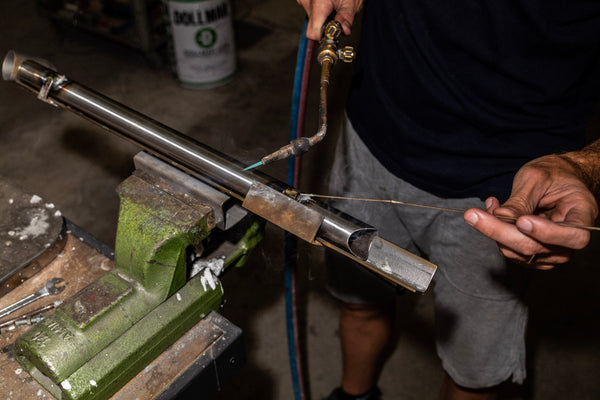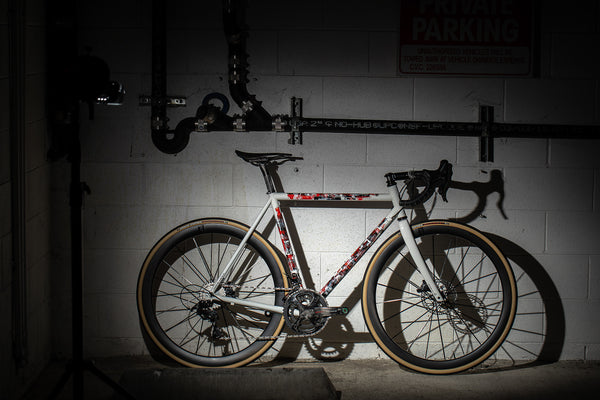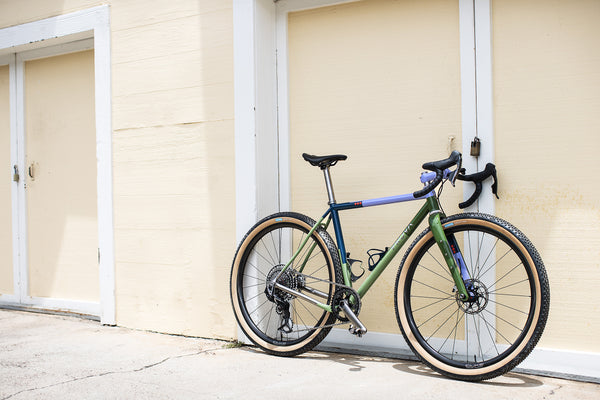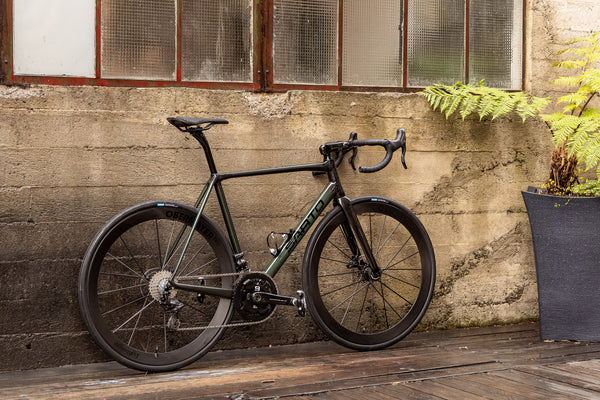It's a known fact that travel is disruptive. Travel interrupts routine. Routine, more than willpower, is what fuels even the most dedicated of professional cyclists (and being PRO in every field, for that matter). Routine and routine's habits always trump desire, whether it's desire to sit on the couch, desire to go easy instead of pound out an interval, or desire to tuck into a Double Double (Animal Style) instead of holding out for the hearty chicken and lettuce salad we have waiting at home. It's with a heavy heart that we admit that we let travel get in the way of our ambitious project to document our path back to getting fast. Fast and skinny. Ten days overseas on another continent might've interrupted things - but rest assured, dear readers, we've not been slacking. We have entirely too much proof.
NATE
I stared down at the clock that hovered over the stove. It blinked an impuissant 2:38. In the morning. My stomach howled. It's taken some willpower, but I'm back to heavy caloric restriction on rest days. This is the result: Bonking in my sleep. There's nothing less enjoyable than glycogen depletion in a REM cycle, as a cyclist's carbohydrate-dependent brain begins to grind to an absolute halt, running on fumes.
I mulled where I was, what I was doing. Everyone loves a torturous journey, they tell me. I did that once. In the winter of 2010 I was bored, aimless, and 23 years old. Because a mentor told me I needed to quit screwing around and do something with my life, I threw every fiber of my being into the meatgrinder of a goal of becoming a domestic professional bike racer in a single season. I was successful. It's one of the only accomplishments I'm proud of - going from dangling off the back of a Cat 4 field to dropping Grand Tour podium finishers in the space of six months was impressive. It taught me that I was capable of anything I dedicated myself wholeheartedly to, but now, some five-odd years on, in a sense, I want to do it again? I was young then. Younger. I was also single-minded, ludicrously driven, and had nothing to lose. I'd conscientiously decided that if pedaling a bike for a tiny paycheck went belly-up, I'd be inking my name on the line for a five-year commitment with the French Foreign Legion. There was something deeply motivating in not caring about what the world thought about me, but more importantly, what I thought about me. It was cynically empowering.

Nate, circa-2012, contemplating life and death in the midst of the Redlands Classic.
Just as empowering was the novelty of the experience. Before then I'd never put my body through the intense gauntlet of riding 15 to 30 hours a week on a consistent basis. Everything was new, and even if it was detrimental, it was exciting. Absolute depletion of my sex drive? Passing out while taking a leak because my resting heartrate had dropped so low? Being hungry all the time? Craving raw meat? Exhibiting personality traits that were less-than human? It was all reason for delight. Now, I know all of the usual suspects when it comes to getting fit again - and they mostly annoy me. Almost fainting in the hallway on my way to a restaurant urinal is no longer cute, it's childish. But even still - it's somewhat invigorating. It lets me know there's progress, that the work is paying dividends.
It leads me to where I am now, some three-ish weeks into where we are from whence we started. Before, I was off the bike, in a serious sense, for about six months. Once it became apparent that my off-again on-again spot with Smartstop in 2015 was a slim chance well on its way to non-existent, I pulled the plug on my self-coached training sometime around July of 2015. Like most professionals who abruptly quit, I continued to eat and drink like I was still slugging out 32,000 calorie weeks. After a few extra kilos, I sheepishly made my way to legendary Marin-based coach Craig Upton in January for a lactate threshold test to get the ball rolling.
It was less-than exciting. First, let's chat about what a "lactate threshold" test is and does. Familiar? Skip the next two paragraphs - but this is the "finger pricking" test you see in all the movies. It's an excellent way to establish a baseline for training off of, as well as measure an athlete's current fitness. The very simple, one line answer, directly from Mr. Upton, is that he looks for how many watts an athlete can produce without accumulating lactate. He has the athlete ride a trainer at increasingly difficult power stages until they "fail" (blood lactate, measured from the finger pricking, spikes). Craig's test is harder because instead of the industry standard two-minute power stages, his last six minutes. This works to replicate "real-world" lactate buildup and produces a more accurate (and quite a bit lower) result than something shorter, or than a "20 minute power" field test that a lot of athletes do on their own. Anyway, lactate accumulation is measured in millimoles. Once lactate hits around 4.0mm (depending on who you talk to), the body begins to shift from reliance on fat as an energy source to using glycogen (the body's afterburner fuel - also known as carbohydrates). This is known as "Lactate Threshold", and reflects the ability of the body to move oxygen to the muscles. How does this matter when it comes to riding? Energy utilization!
Fat is virtually an unlimited energy source for even the leanest of athletes. As a contrast, most people only have 1000-2000 calories of glycogen stored in the liver and muscle at maximum capacity. At approximately 280 watts of absolute intensity on the bike, most people burn about 1000 calories per hour. Replenishing it takes a lot more time than just sticking a hose into your gas tank. The human digestive tract can only process 250-500 calories per hour (and that's a subject of hot debate). When you hit "E" on the gas tank, you bonk, and your power output drops dramatically as you run out of jet fuel. It's why that "one guy" on the group ride is a hammer for the first 1.5-2 hours, and then fades dramatically towards the end. Which leads us to our logical conclusion: Being fast and fit is a battle for efficiency. The harder you can go without chewing through your glycogen stores, the longer you can prolong the bonk, the better you'll ride for longer, and the better your chance of "winning". In a bike race, it's not who has the most power - it's who has the most power at the end.
Finally: My LT test! For me - this is low, especially when we take into account my current hefty weight of 176lbs/80kg. An LT of 350 watts (for reference, Craig showed me Chris Froome's test, and it's just under 390 watts at 150lbs). It's what happens when you quit doing intervals on the bike and instead do them on craft IPAs. But, there are benefits to being a grizzled former pro with a half-decade of training under my belt. Craig says, "In your test, we can see a solid aerobic system, producing 270w before we see any lactate increase. This is very good and shows a great level of fitness, as well as good potential if we can improve this a little". The motor is still there! Maybe there's hope? Craig thinks we can boost my LT by a solid 20-30 watts in the next 90 days, which, if my weight cooperates, would put me solidly back into "PRO" shape. I asked Craig for his greatest improvement story as inspiration. He told me that he coached a guy wanting to pull off an Ironman in a single year. In his first test, he was completely out of shape. One year later, at the Ironman, he rode with more average power over 112 miles than what he failed at during a six minute stage during his LT test. He was able to hold a wattage for six hours at a power higher than he could for six minutes. That's rad.
Right now, my training volume is on the lower side - 15-16/hrs a week or so, with some easy tempo ("Zone 3") workouts at a high cadence. Craig is really into cadence work, which is something I began neglecting as I got older and more set in my ways. Most people who ride with me have seen my penchant for mashing everything in the big ring. While that looks cool and develops a lot of torque, it's also really inefficient. Our objective with the high-cadence stuff is to develop the ability to drive power anywhere across the RPM range. I'm really enjoying a workout he's having me do right now, which involves climbing while alternating between seated/standing at a higher cadence (90RPM) and tempo (320-340) power. It's a lot tougher than it sounds to turn 90RPM while standing on the pedals!
Nutrition is still a struggle for me, especially with a family and work to focus on. It's a lot easier when I was just focused on me - but when eating in a more communal setting, keeping track of everything is tough. On the upside, my IPA consumption is approaching 0...relatively speaking. My goals over the coming weekend are to absolutely nail my volume, as well as track all nutrition. Back to weighing my food!
Strava stalk away - I'm posting exactly what my workout was, as well as leaving power/HR data intact for everyone to pick over.
CHAD
Two weeks in! My main goal with starting this ‘challenge’ was consistency. I really hadn’t put together a solid week of training, much less 90 days in over a year and was feeling it. Slow, no snap, tiring too quickly on the climbs, getting sore and worse, getting injured (IT Band) from going a bit too long and too hard keeping up with Nate with no miles under my belt. So, I took a full week off the bike, worked on stretching and foam rolling. Then I put in 4 rides in the following week, SUPER SUPER easy, pretty flat, missing one day. IT band was better, but still suspect. Started seeing a massage therapist and that helped, but really it was the yoga and stretching. But, more than just consistency on the bike I wanted consistency in the rest of my life. Keeping it easy on myself I just picked four things to concentrate on.
- Drinking enough water. It’s funny how I always thought I was getting enough, but when I thought about it I was lucky to get 4 cups a day in, sometimes including what I drank while riding. Not enough. This is one of the easiest ways to feel better. I make sure to get a minimum of 8 cups of plain water a day not including what I drink on the bike. And this is just water, juices, shakes etc don’t count. It's funny how much better I felt after one week of this.
- Sleep. Minimum of 8 solid hours a night. I was not even close before. Every once in a while I’d get 8 hours, but mostly 6-7 did it. I got 8 hours every night but one. Crazy also how much better I felt, plus needed the recovery after a solid week of riding with more to follow the next week.
- No alcohol. Not that I think there is anything wrong with a beer or two most nights, and I was doing this pretty much every night, but when you are trying to lose 10+ pounds and get as lean as possible this is a pretty big handicap to overcome. Lot’s of calories, at night. I failed this pretty hard, think I went one night without. As such, didn’t really see any weight drop.
- No processed foods or sugar. Did way better here. I don’t really eat too much junk food, but it’s pretty hard to turn down some cookies or a bag of chips after a good ride. But again, not the thing to do if trying to lean up, lose some weight and just feel better. I give myself a C here. First week though, not so bad!
- Drinking water. 8 plus cups every day. Though, I do need to get better on the bike. 1 bottle an hour is what I need, am pretty short of that, though it’s usually that way when it’s cold out for me. Not correct and I’ll work on this.
- Sleep. Pretty good, though Sunday night I stayed up until after midnight, watched the Super Bowl and didn’t sleep well. Ride was hard the following day. Not saying that was the only reason why, but I feel way better on 8+ hours for sure.
- No Alcohol: Much better. Still drank 3 out of 7 nights, but felt MUCH MUCH better the mornings after not drinking.
- Diet: A bit better here. Again, overall, not bad. But my goal is to have healthier snacks like fruit. Still getting that odd bag of chips or huge cookie or super greasy sandwich a bit much. Not trying to be too strict, but if I cut down on this the weight would be coming off much better. And that bag of chips was only good for the first few minutes. Feeling good on the climbs on the bike feels good all day!
Again, I have to stress that consistency was my main goal and I hit that with a few things. Riding, water consumption and sleep. If you are not drinking enough water or getting enough sleep, doing so will help you more on the bike (and in general living) than any new upgrade you can get. It doesn’t cost much. If you can’t find the motivation to do at least these two things, how are you going to find the motivation to get on the bike and train properly through the week? Start with the easy things and take it from there. Water and sleep the first week or two, then keep up the work on diet and alcohol for the next few days until you have a rhythm going. Don’t be too much of a monk as that is just boring and can set you up for some major bingeing. For me, having one "cheat" day a week where I do eat and drink whatever sounds good keeps me sane. Also, you’ll find that after a few weeks of eating well, riding well, getting enough sleep etc, your bad cravings begin to diminish.
- Water, again, forming a lifelong habit here. At least 8 cups of plain water a day, not including what I have on the bike or in other drinks.
- Sleep, 8-9 hours of good sleep every night. Easier to have good sleep by relaxing a while before going to bed, not staring at a computer or TV. So really, for me, need to start winding down by 7pm so I’m in bed by 9pm and up at 5am so I can eat a little before getting in the bigger rides I’ve got coming up.
- Alcohol. I’m cutting it down little by little. I’d like to get into the habit of no more than once a week.
- Diet. My main goal this week is to cut out chips and sugar. Doing this alone should be good for an extra pound this week!
- Riding. My goal this week is 300 non-commute miles. So basically I’ve got to get in 6 50 mile rides. As long as I commute every day I’ll have 350 total miles by the end of the week. Since I also have the goal of getting on the bike every day, and my shortest loop is 25 miles that really means that I can do two 25-mile rides and five 50-milers.
Stalk Chad on Strava in his quest to find his fitness again.













Back to Journal